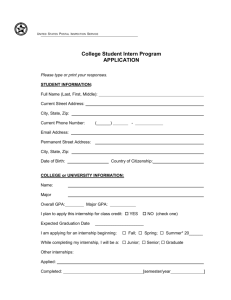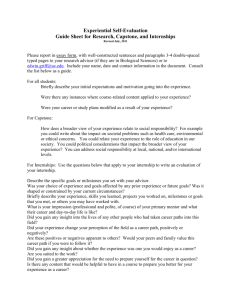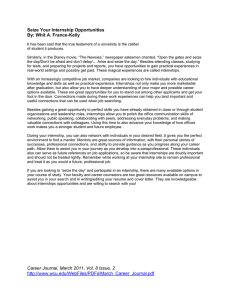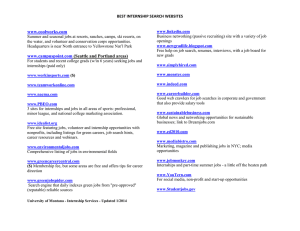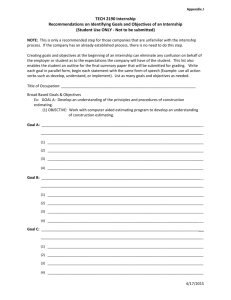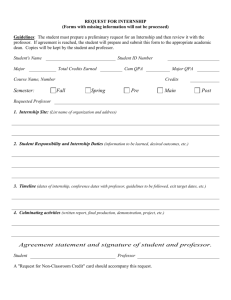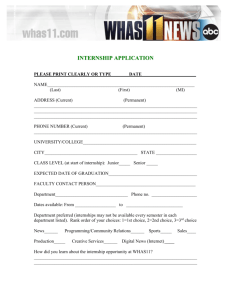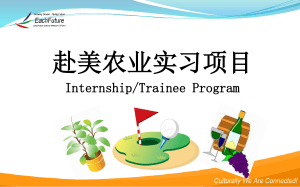Implementation*Group E
advertisement
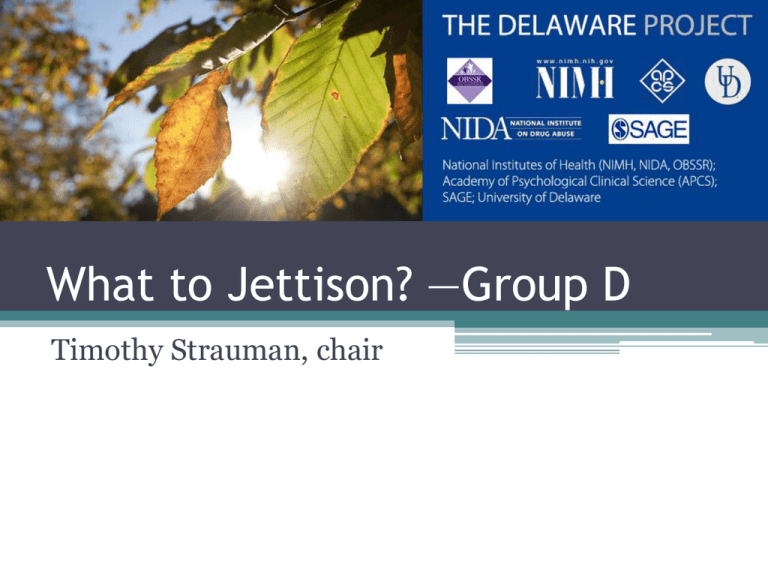
What to Jettison? —Group D Timothy Strauman, chair Organizing principles • Offer options rather than a prescriptive set of requirements • Use the notion of “applications” rather than simply interventions • Reverse notion of “what to cut;” think about what’s critical and then have the rest be optional/tailored (“Core elements,” e.g., stats, methods, assessment, psychopathology, application—including basic clinical skills) • Transcend the course model One-year ideas • Allow students to test out of some broad and general elements; make use of clearinghouse, online recorded courses, etc. Clearinghouse making experts available for key courses, but from a clinical perspective (e.g., course materials, recorded lectures, etc.; an archived set of materials). APCS could provide this service. Meeting current APA requirements: abbreviated online courses • Begin conversations with internship directors/academy internships regarding number of clinical hours; provide students with data regarding academy placement rates • Break down silos between areas within departments to allow a better fit for the range of student interests (e.g., non-clinical students taking psychopathology or intervention; clinical students taking courses in other areas or departments) • Encourage students and programs to broaden definitions of what counts as a clinical hour (which would be greatly facilitated by communication among programs) • Also establish communication among programs regarding creative ways to meet APA requirements—regarding B&G as well as clinical hours • Replace existing externships or internships with placement in very different settings: HMO, NIH, CDC, SAMHSA, other labs, community mental health, etc.; and not necessarily just in internship, but possibly during graduate school as well • Consider training in community settings as a possible alternative to some or all time in departmental training clinics Five-year ideas • Detach ourselves from course model; minimize didactics, combine courses, spend less time within each didactic requirement • Arrange for “in-house” experiences that may not be traditional, accredited internships. • Have flexibility in the way areas of knowledge are pursued; for example, learning about executive function to inform a particular research study (e.g., problem-based learning) • Reconceptualize the purpose that internship serves, and its current structure/timing • Work with licensing boards regarding acceptable internship experiences and acceptability of alternative accreditation Issues • Teach EBTs? If so, how much? Will learning an EBT lock students in to that worldview, or will it allow them to discover experientially the elements that don’t work? • Difficult to move out of the assumption that students must master individual therapy. Do all need it? What skills are necessary for a clinical scientist? • Adopting NIMH goal would mean a dramatically different curriculum in current EBTs. • How much of this is possible during graduate school? Yes, if it’s six years? (Should most applied clinical science training take place in internship/post-doc?)



